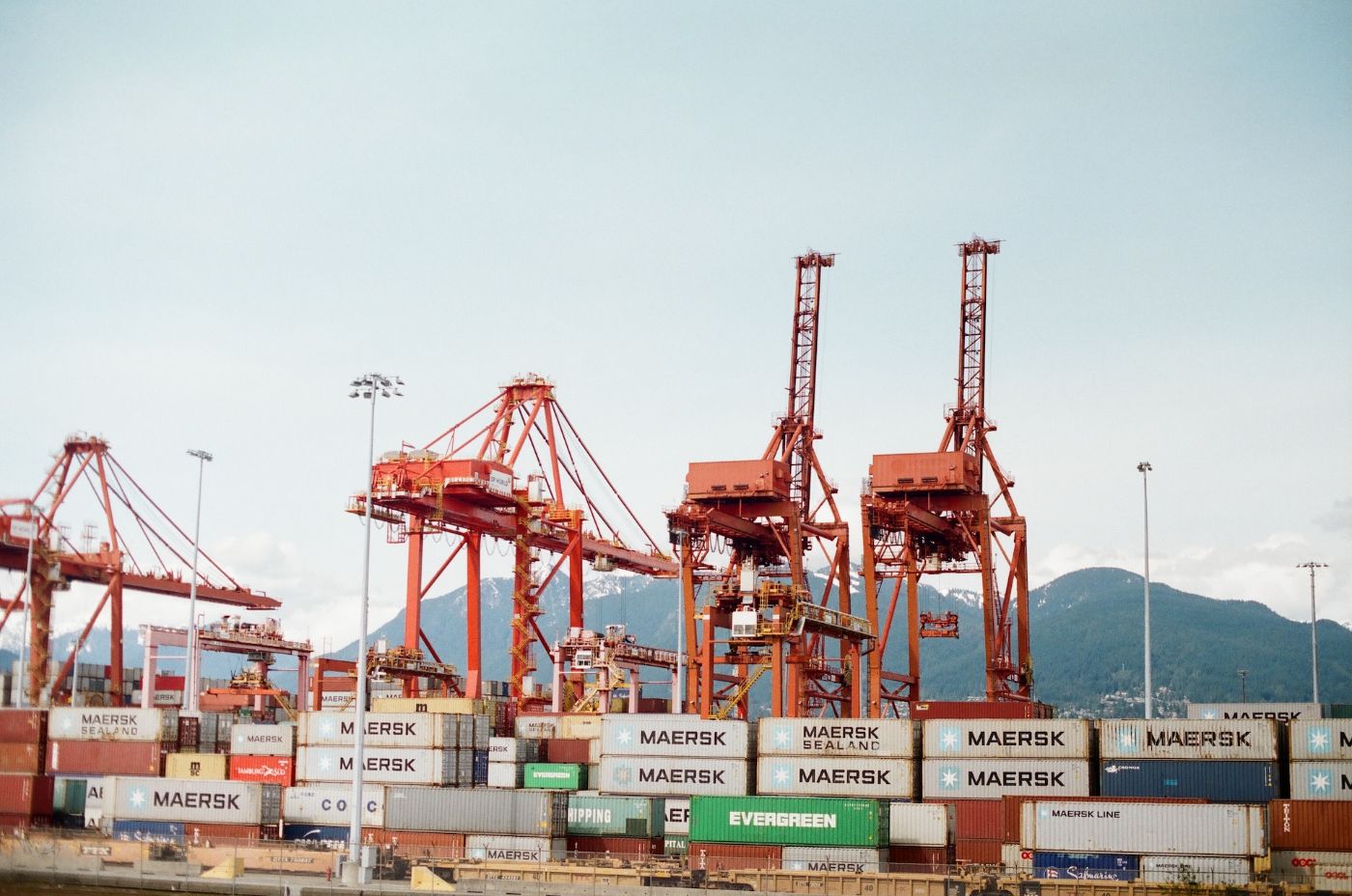How Are (Super) Yachts Transported? - 3 Surprising Ways
Yachts can be challenging to transport, especially when dealing with large ones that are too big to be transported by road or even by sea. But you might be surprised to learn that there are specialized transport methods that can move these luxurious boats from one location to another. In this article, we'll give you three methods that ensure that yachts are transported safely and efficiently to their destination.
The most common way to transport a yacht is via overland transport, which uses a trailer to transport the yacht overland. Next is via sail transport, which involves sailing the yacht to its destination. Lastly, yachts can be transported using specialized transport ships called lift-on/lift-off (LoLo) and float-on/float-off (FoFo).
The distance between the starting and ending points will often determine the most cost-effective and efficient transportation method. If you need to transport your yacht from the United States to Europe, a specialized yacht transport ship would likely be the most practical option. Let's look at other factors that can determine the best transport method for your needs.
Summary
- In overland transport, yachts are often transported on specialized trailers or flatbed trucks that are designed to securely hold and transport the vessel.
- Sail transport is a cost-effective and environmentally friendly option for boat transport, as it uses wind power rather than fossil fuels.
- In FoFo (Float-On/Float-Off), the yacht is floated onto the dock and secured in place before the dock is raised back onto the ship.
- Smaller yachts can often be transported via overland transport, but larger yachts may require specialized yacht transport ships.
- If time is of the essence, sail transport may not be the best option, as it can take longer than other methods.

3 Surprising Methods To Transport A Yacht
Below is a table summarizing the differences and pros and cons of each method of yacht transport:
| Method | Description | Advantages | Disadvantages |
|---|---|---|---|
| Overland transport | Yachts are transported over land using trucks or trailers | Can transport yachts to inland destinations | Limited by road and bridge weight restrictions |
| Sail transport | Yachts are sailed to their destination | Environmentally friendly, can be a fun experience for yacht owners and crew | Limited by weather and sea conditions, can be time-consuming |
| Lift-on/lift-off (LoLo) and float-on/float-off (FoFo) | Yachts are loaded onto specialized transport ships using cranes (LoLo) or by floating onto a submersible platform (FoFo) | Can transport larger yachts | Limited availability and higher cost |
Overland transport is a common method of transporting yachts
Overland transport is a popular method of transporting yachts, especially when they need to be moved over long distances or across different countries. Yachts are often transported on specialized trailers or flatbed trucks that are designed to securely hold and transport the vessel.
This can be a cost-effective alternative to shipping a yacht by sea, especially for smaller vessels that can be easily loaded onto a truck. It also allows yacht owners to avoid the risks and uncertainties associated with sea transport, such as weather conditions and possible damage to the vessel during loading and unloading.

If you're curious about the cost of transporting a sailboat via road, here's an article that can give you an idea.
However, overland transport does have its own challenges, such as navigating narrow roads and bridges, obtaining necessary permits and clearances, and ensuring that the yacht is properly secured during the journey. The transport company needs to carefully plan the route and ensure that the driver of the truck is experienced and skilled in handling such large and heavy loads.
In addition, the company may require obtaining permits and clearances from local authorities, which can be a time-consuming and complex process. The transport company needs to be familiar with the regulations and requirements of each country or region they are transporting the yacht through and ensure that all necessary permits and clearances are obtained before the journey begins.
Sail transport is another cost-effective method of transporting yachts
Sail transport refers to the transportation of yachts and other boats using sail power instead of traditional methods such as towing or shipping. This method is often used for long-distance transport, such as when a yacht needs to be moved from one continent to another.

This method can be a cost-effective and environmentally friendly option for boat transport, as it uses wind power rather than fossil fuels. However, it can also be a slower method of transport, as it is dependent on wind conditions and may require multiple stops for refueling and crew changes.
There are specialized companies that offer sail transport services, and they typically use large cargo ships equipped with masts and sails to transport yachts and other boats. These ships are designed to carry multiple boats at once, and they often have crews with specialized skills in sailing and boat handling.
While sail transport involves loading the yachts onto a cargo ship that is equipped with masts and sails for transport, it can also involve sailing the yachts to their destination.

In some cases, yacht owners may choose to sail their own yacht to their destination, either by themselves or with a hired crew. This can be a more adventurous and personalized option, but it also requires a significant amount of sailing experience, knowledge of navigation, and preparation for long-distance travel.
Transporting yachts via specialized yacht transport ships
Transporting yachts via specialized yacht transport ships is a common practice in the maritime industry. These ships are designed to safely and efficiently transport yachts of various sizes and shapes across oceans and seas.
There are three main types of yacht transport ships: FoFo (Float-On/Float-Off), LoLo (Lift-On/Lift-Off), and RoRo (Roll-On/Roll-Off).
-
FoFo ships are equipped with a submerged dock that can be lowered into the water. The yacht is then floated onto the dock and secured in place before the dock is raised back onto the ship. This method is ideal for transporting large yachts that cannot be lifted by crane.
-
LoLo ships use a crane to lift the yacht on and off the ship. This method is suitable for yachts that are too large to be transported on a trailer but can be lifted by a crane. Yachts are typically lifted onto the ship using a combination of slings and straps and then secured in place using chains and other equipment.
-
RoRo ships have a ramp that allows yachts to be rolled on and off the ship. This method is ideal for transporting smaller yachts that can be easily loaded onto a trailer.
Take Into Account The Distance, Size, Time Limit, And Cost
Below is a table comparing the different yacht transport methods based on different factors:
| Factors | Sail transport | Overland transport | Specialized yacht transport ships |
|---|---|---|---|
| Distance | Short distances | Medium distances | Long distances |
| Yacht size | Small to medium yachts | Small yachts only | All sizes of yachts |
| Time constraints | Not ideal for time-sensitive situations | Can be faster than sail transport | Fastest option for long distances |
| Cost | Typically the most cost-effective option | Moderately expensive | Most expensive option |
The distance determines the most cost-effective and efficient transportation method
For short distances, sail transport may be the most cost-effective option since it doesn't require specialized equipment or fuel costs. However, for medium distances, overland transport may be a better option as it can be faster and more efficient than sail transport.
On the other hand, for long distances, specialized yacht transport ships are often the best option as they can transport yachts across oceans and can handle larger vessels. Let's look at the following examples:
- If you need to transport your yacht from one marina to another just a few miles away, sail transport may be the best option.
- If you need to transport your yacht across the country, overland transport may be more efficient.
- If you need to transport your yacht from the United States to Europe, a specialized yacht transport ship would likely be the most practical option.
Want to know about the average cost of interstate boat transport? You can refer to this article.
The size of the yacht will determine which transportation methods are available
Smaller yachts can often be transported via overland transport, but larger yachts may require specialized yacht transport ships. Sail transport can accommodate small to medium-sized yachts, but larger vessels may be more difficult to transport via sail.
For example, if you have a small yacht that needs to be transported overland, a flatbed truck or trailer may be sufficient. However, if you have a larger yacht, you may need to use a specialized yacht transport ship or barge to transport it. In general, the larger the yacht, the more expensive and complex the transportation process will be.
The urgency of transportation can impact the choice of transportation method
Sail transport can be a slower option since it is dependent on weather conditions and wind patterns. Overland transport can be faster than sail transport, but it still requires time for loading, unloading, and transportation.
Specialized yacht transport ships are often the fastest option for long distances, as they can transport yachts across oceans in a matter of days or weeks. Note that even specialized yacht transport ships may have limitations in terms of scheduling, as they may only depart on certain dates or have limited availability.

Cost is a critical factor to consider when transporting a yacht
Sail transport is typically the most cost-effective option, as it doesn't require specialized equipment or fuel costs. Overland transport can be moderately expensive, as it requires specialized equipment and drivers. Specialized yacht transport ships are the most expensive option, as they require specialized ships and crews. For a complete guide to boat transport costs, here's our article detailing the expenses.
Perhaps consider the cost of transportation when choosing a transportation method and work with a transportation company that can provide a detailed breakdown of the costs involved. Try to factor in any additional costs, such as insurance and permits, when calculating the total cost of transportation.
If you're looking for a detailed breakdown of the costs of transporting a boat, here's a good article for you on the costs of transporting a 40-foot boat.
Did you find the answer to your specific question?
👍 0 👎 0




Leave a comment